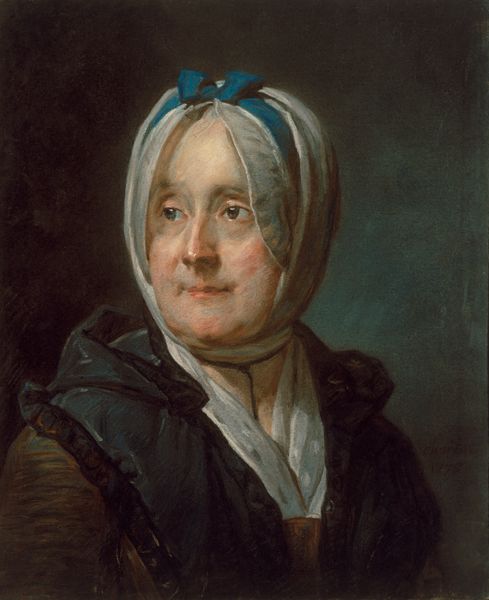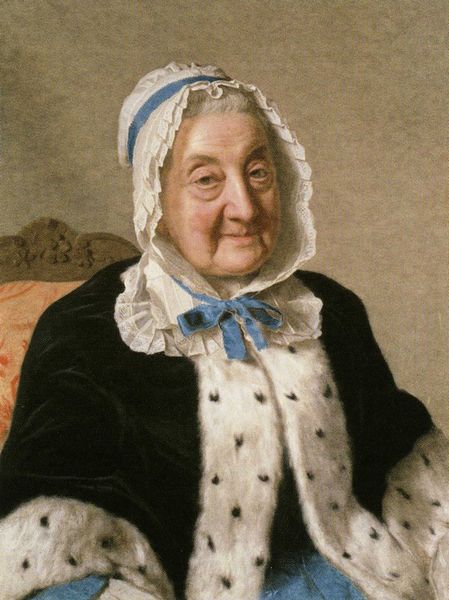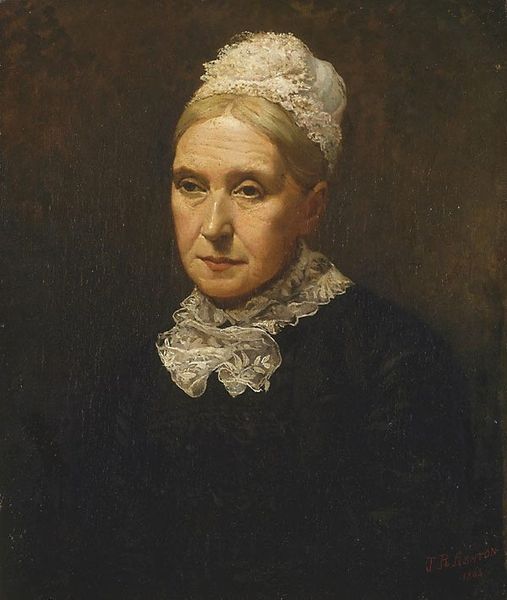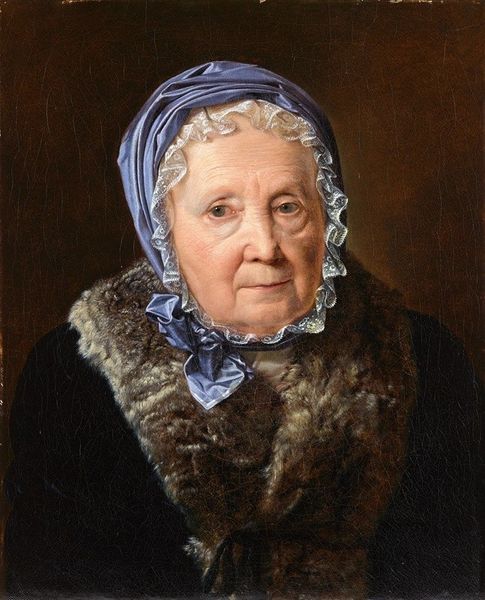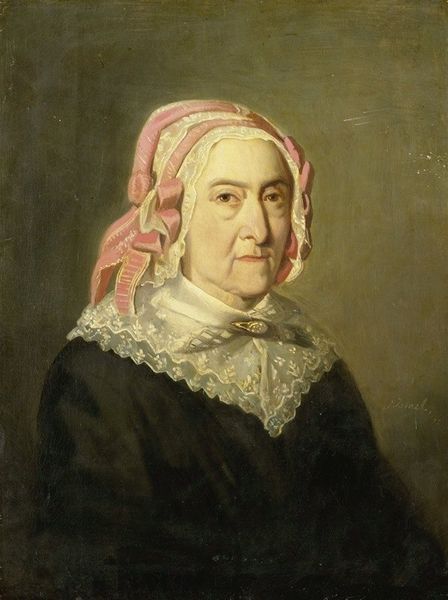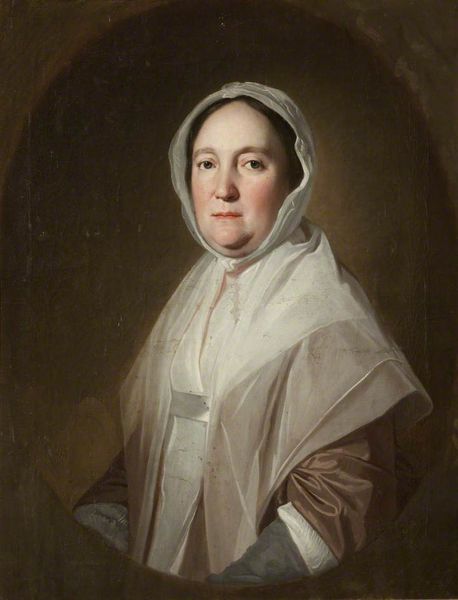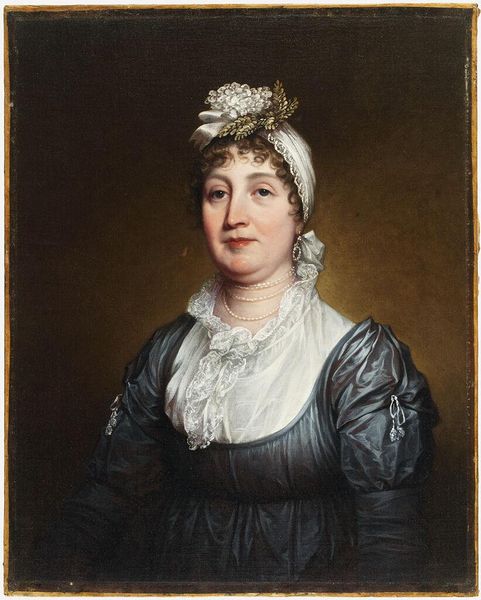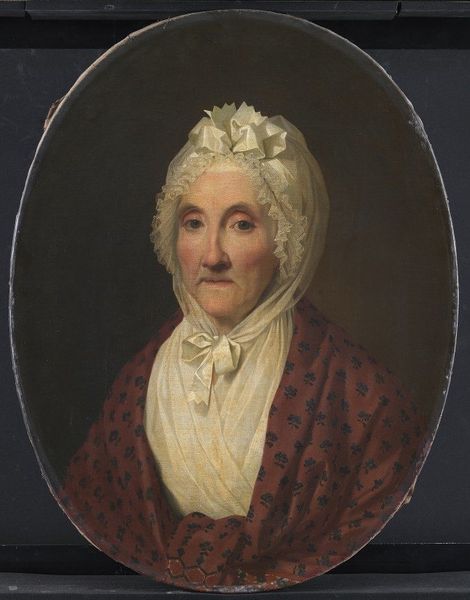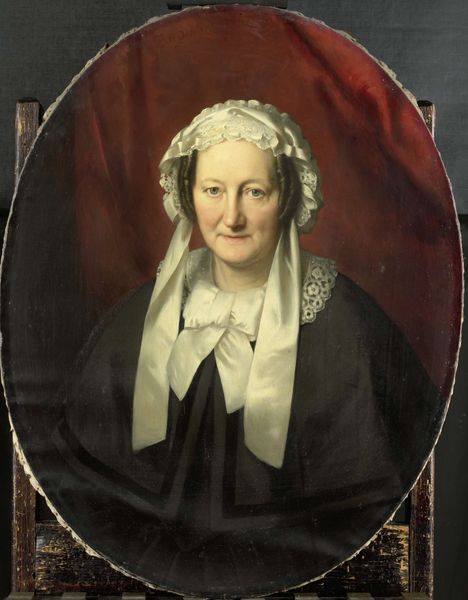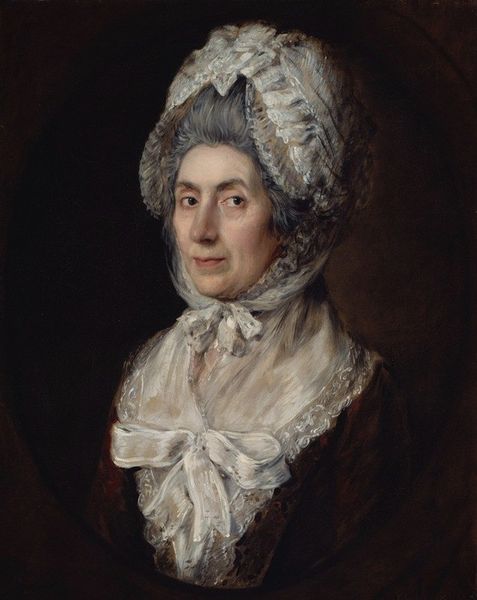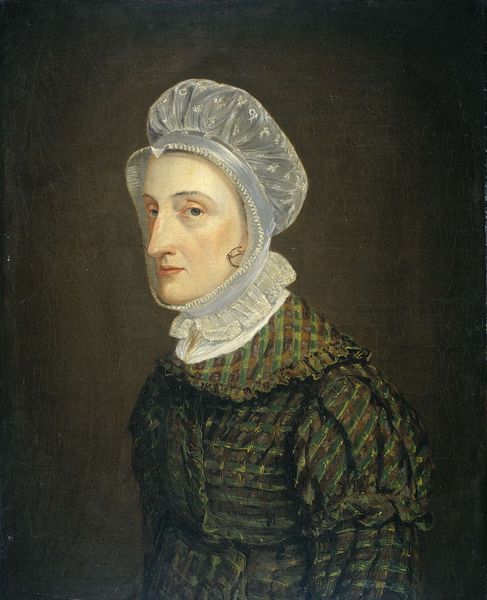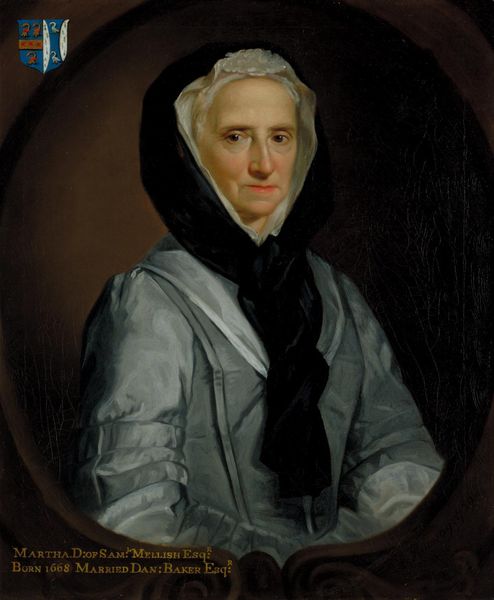
Portrait of Mme. Chardin (nee Françoise Marguerite Pouget) 1775
0:00
0:00
Dimensions: 38.5 x 46 cm
Copyright: Public domain
Editor: Here we have Jean-Baptiste-Siméon Chardin’s "Portrait of Mme. Chardin (née Françoise Marguerite Pouget)" painted in 1775. It’s an oil painting, and what strikes me most is how direct and unsentimental it feels for a portrait from that time. What’s your take on it? Curator: It’s interesting you say that. We often view portraits like this within the context of representing status, but what about their function in constructing marital roles, especially within artistic families? Think about the Paris Salon – how would Madame Chardin’s presence as a supportive wife *behind* the scenes shape Chardin’s acceptance and artistic freedom *in front* of it? Editor: That’s fascinating. I hadn’t considered the impact of Madame Chardin and her image. Do you mean to imply this portrait operates, in some way, as a validation or accreditation of his work, by being the image of an amenable spouse? Curator: It goes beyond mere approval. The domestic sphere heavily influenced public artistic life in this period. Displaying his wife in an honest, unglamorized light – a kind of quiet virtue – signaled Chardin's adherence to values the public admired. Think of it as a political gesture *through* the personal. Is she a collaborator *for* him, through *her* being seen? Editor: So, the portrait isn’t just about capturing her likeness; it's strategically deploying her image to reinforce certain perceptions of Chardin himself within a particular socio-political context. It certainly makes you consider all the non-artistic aspects that help shape artworks and artistic careers. Curator: Exactly. And understanding those forces can reshape our entire view of the painting itself. Editor: I’ll never see portraits the same way again. Curator: Good. That’s how art history helps us to engage with our own culture.
Comments
No comments
Be the first to comment and join the conversation on the ultimate creative platform.
